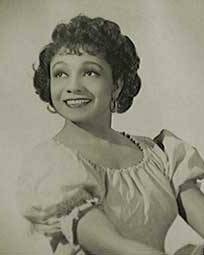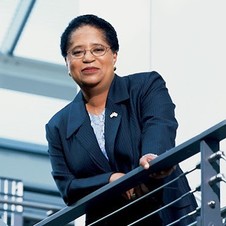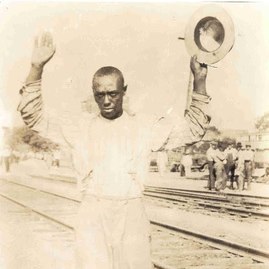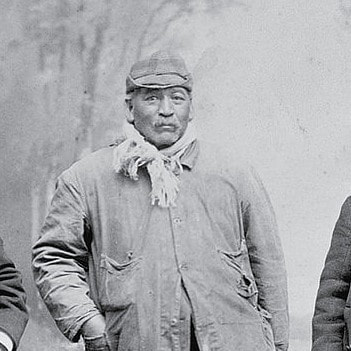|
“There isn't a single black gay writer of literary fiction or nonfiction that has not been influenced by James Baldwin on some level," Charles Stephens, executive director of the Counter Narrative Project, told NBC News. A writer and social critic, Baldwin is perhaps best known for his 1955 collection of essays, "Notes of a Native Son," and his groundbreaking 1956 novel, "Giovanni's Room," which depicts themes of homosexuality and bisexuality.
1 Comment
 Dr. Soloman Carter Fuller, born in Liberia in 1872, was the grandson of an American slave who had purchased his freedom and emigrated to Africa. Fuller was a graduate of Boston University Medical School and eventually worked as a pathologist at Westborough State Hospital for the Insane, becoming the nation's first black psychiatrist. In 1904, German psychiatrist Dr. Alois Alzheimer invited five foreign doctors to be his graduate research assistants at the Royal Psychiatric Hospital in Munich. One of them was Dr. Fuller. Alzheimer had already studied a 51-year-old patient who exhibited symptoms of what would later be called Alzheimer's disease. In 1907, Dr. Fuller examined the brain tissues of cadavers who had a variety of mental disorders and found plaques called amyloids in them. After more research, he found one that matched what Alzheimer had originally described. He wrote that the cases supported Alzheimer's discovery of a particular form of dementia and that it was not due to senility, but rather an actual disease. In 1919, Fuller left Westborough for Boston University Medical School to teach pathology and worked there for 34 years until blindness caused by diabetes forced him to retire. Despite his condition, he practiced privately from his Boston home until he succumbed to his illness in 1953. In 1974, in dedication to Fuller's work in neuropathology, Boston University opened the Dr. Solomon Carter Fuller Mental Health Center, which provides psychiatric outpatient services. Angela James is a retired women’s hockey star, and just the second black person inducted into Canada’s Hockey Hall of Fame. During her long career, James won a number of gold medal world championships as a member of the Canadian women’s national team.
In 1990, the IIHF held the first World Women’s Championships with James scoring the first goal in the history of the tournament. Her scoring success led to her being dubbed the “Wayne Gretzky of Women’s Hockey” and she went on to claim three other World Women’s Championships. Following her retirement from the sport, she went into coaching and opened up her own hockey school. Later, the Flemington Arena in her hometown was renamed in her honor. She was inducted in the Hockey Hall of Fame in 2010, joining Black Canadian hockey legend, Grant Fuhr, who was inducted seven years earlier.  Etta Moten Barnett blazed a trail for black women in entertainment, changing the perception of how her race and gender were seen on-screen and stage. In 1934, based on her talents on stage and screen, Barnett was invited by President Franklin D. Roosevelt to sing at his birthday party at the White House. That same year, Barnett married Claude Barnett, the founder and owner of the American Negro Press. Alongside her husband, she traveled as part of a U.S. delegation to Ghana, and was also a cultural representative of the states at independence ceremonies across Africa. After her husband’s death in 1967, the Alpha Kappa Alpha sorority involved her in a variety of civic organizations. In 1979, Barnett was inducted into the Black Filmmakers Hall of Fame. In 2001, during her 100th birthday celebration, Halle Berry presented Barnett with an award during the Chicago International Film Festival’s tribute “Black Women in Film – From Etta to Halle.”  Tennis legend, Arthur Ashe, passed away this week 25 years ago after bravely announcing to the world in April 1992 that he contracted the HIV virus. Ashe used his fame and resources to raise awareness and assist in the treatment of the condition. After a stint in the U.S. Army, Ashe went into his pro tennis career and won his first Grand Slam, the US Open, in 1968. In all, Ashe won 66 titles, included singles wins at both the Wimbledon Open and the Australian Open. He is the only black man to win the singles titles for the aforementioned Grand Slam tournaments. Ashe reached the quarterfinals of the French Open twice in his career. Ashe later established the Arthur Ashe Foundation to Defeat AIDS, now an endowment, and the Arthur Ashe Institute for Urban Health, which exists today in Brooklyn, New York.  In 1940, Hattie McDaniel was the first African-American performer to win an Academy Award for her portrayal of a loyal slave governess in Gone With the Wind. And in other film news, Black Panther, has topped the charts - a movie with an African-American cast, showing all boys and girls that anyone can be a superhero. "The Ryan Coogler-directed film’s estimated $218 million four-day haul ranks as the biggest February opening weekend ever, the biggest non-sequel debut ever, the top-grossing film by a black director… you get the point...By every metric, Black Panther has already proven itself a box office smash, a critical darling and a bonafide cultural phenomenon."  We think of Edison as inventing the incandescent light bulb and Bell as inventing the telephone, but those inventions, and others, wouldn't be what they are today, without Lewis Latimer. An inventor and engineer, Lewis Latimer was born in Chelsea, Massachusetts, on September 4, 1848. He collaborated with science greats Hiram Maxim and Thomas Edison. He was a member of Edison's research team, which was called "Edison's Pioneers." Latimer improved the newly invented light bulb by inventing carbon filaments. His inventions didn’t stop there, working with Alexander Graham Bell, Latimer helped draft the patent for Bell’s design of the telephone. This genius also designed an improved railroad car bathroom and an early air conditioning unit.  Dr. Shirley Jackson an American physicist who received her Ph.D. from the Massachusetts Institute of Technology in 1973. She was the first African-American woman to earn a doctorate in nuclear physics at MIT. In addition to her lengthy list of academic achievements, she also has an impressive number of inventions under her belt. Her experiments with theoretical physics paved the way for numerous developments in the telecommunication space including the touch-tone telephone, the portable fax, caller ID, call waiting, and the fiber-optic cable. Today, Dr. Jackson is the 18th president of Rensselaer Polytechnic Institute in Troy, New York. The origin of the potato chip: As the story goes, Crum, whose sister Kate worked alongside him as a prep cook, became agitated when a customer sent his French-fried potatoes back to the kitchen, complaining that they were cut too thickly. Crum, by all accounts somewhat of an ornery and, at times, sarcastic man, reacted by slicing the potatoes as thin as he possibly could, frying them in grease, and sending the crunchy brown chips back out on the guest's plate that way.
The reaction was unexpected: The guest loved the crisps. In fact, other guests began asking for them as well, and soon Crum's "Saratoga Chips" became one of lodge's most popular treats. In 1860, Crum opened his own restaurant, "Crumbs House," near Saratoga Lake where he catered to an upscale clientele. Guests are said to have included the likes of William Vanderbilt, Cornelius Vanderbilt, and Jay Gould. One of the restaurant's attractions was that a basket of potato chips was placed on every table.  One of the most significant events in Tulsa’s history was the race riot that occurred in 1921. Following World War I, Tulsa boasted one of the most affluent African American communities in the country, known as the Greenwood District. This thriving business district and surrounding residential area was referred to as “Black Wall Street.” In June of 1921, a series of events nearly destroyed the entire Greenwood area. Anger ensued among the city's white residents after rumors began to spread of an encounter a young black man, Dick Rowland, had with a white woman, Sarah Page, just two days prior. Rowland was arrested and in the early morning hours of June 1, 1921, Black Tulsa was looted and burned by white rioters. Governor Robertson declared martial law, and National Guard troops arrived in Tulsa. Guardsmen assisted firemen in putting out fires and imprisoned all black Tulsans not already interned. Over 6,000 people were held at the Convention Hall and the Fairgrounds, some for as long as eight days. In the wake of the violence, 35 city blocks lay in charred ruins, over 800 people were treated for injuries. In 2001, the Tulsa Race Riot Commission released a report indicating that historians now believe close to 300 people died in the riot. |
For frequent updates, visit the Facebook page of Austin NAACP President Nelson Linder!
Archives
July 2024
|





 RSS Feed
RSS Feed